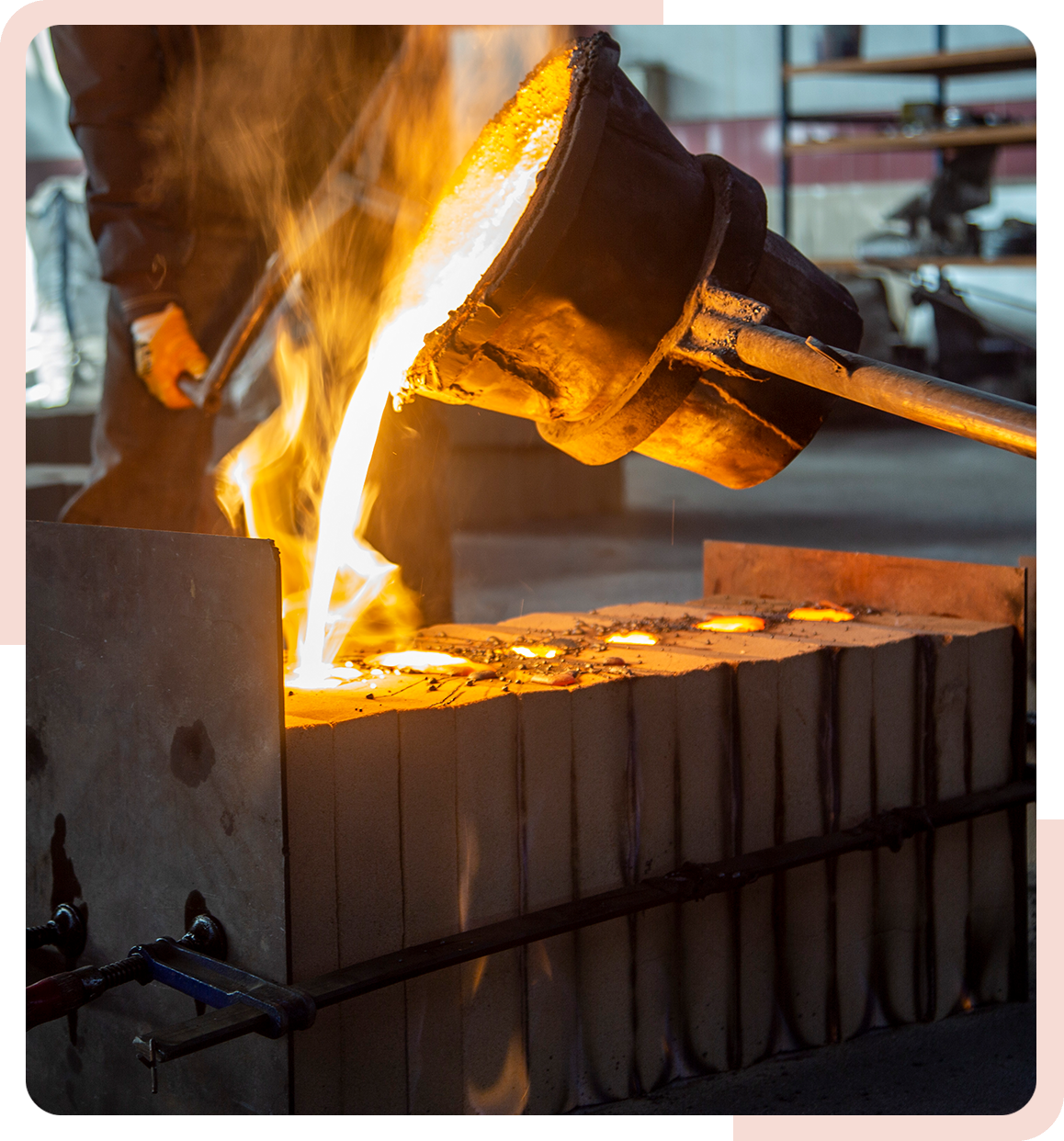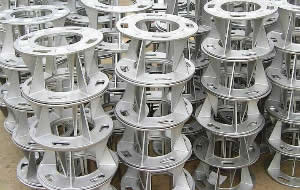Leading Industries that Benefit from aluminum casting
Aluminum Casting Techniques: a Deep Dive Into Products and Approaches for Success
Aluminum casting strategies play an essential role in production. Different approaches exist, each matched to various applications and needs. Sand casting is preferred for larger elements, while die casting is known for its precision in high-volume manufacturing. Financial investment casting supplies thorough styles with superior finishes. Comprehending these distinctions can greatly impact project outcomes. aluminum casting. Selecting the suitable technique is not constantly uncomplicated, leading to essential factors to consider that need to be discovered better.
Understanding Aluminum Casting: A Review
Aluminum casting is a vital production process employed throughout numerous sectors to produce detailed parts with high precision. This method involves putting molten aluminum right into a mold, permitting it to solidify and take the form of the wanted component. The convenience of aluminum, incorporated with its corrosion-resistant and light-weight properties, makes it an optimal choice for applications in automobile, aerospace, and durable goods.
Numerous casting methods exist, each fit to certain needs and job scales. Variables such as mold products, cooling down prices, and the intricacy of the design play a significant duty in determining the most effective strategy. Additionally, the residential or commercial properties of the aluminum alloy made use of can affect the last item's sturdiness, surface, and strength finish.
Recognizing the fundamentals of aluminum casting enables producers to optimize production procedures, lower waste, and assurance high-grade output, which is essential in today's open market.
Sand Casting: Applications and techniques
Amongst the different techniques made use of in aluminum casting, sand casting attracts attention due to its versatility and cost-effectiveness. This approach entails creating a mold from a mixture of sand and binder, which can be shaped to suit complex designs. As soon as the mold is ready, molten aluminum is put right into it, permitting detailed features and information to be captured.
Sand casting is specifically beneficial for creating huge parts and low-volume manufacturing runs, making it perfect for vehicle parts, equipment components, and creative sculptures. The strategy additionally fits a series of aluminum alloys, enhancing its convenience in numerous applications. In addition, making use of sand as a mold and mildew product permits easy reclamation and reuse, contributing to ecologically lasting methods. Attaining high dimensional accuracy can provide obstacles, demanding proficient craftsmanship and cautious control of the casting procedure. Overall, sand casting continues to be a fundamental technique in aluminum foundries worldwide.
Die Casting: Precision and Effectiveness
Die casting is a highly reliable method of producing aluminum parts with exceptional dimensional precision and surface area finish. This procedure involves forcing molten aluminum right into a specifically machined mold under high stress, which permits detailed layouts and minimal product waste. The fast cooling of the alloy within the mold results in a solidified part that frequently needs little to no additional machining.
Die casting is particularly advantageous for high-volume manufacturing runs, where consistency and rate are extremely important. It sustains the development of complex geometries, making it appropriate for numerous applications, including automotive, aerospace, and durable goods.
Furthermore, the process can suit numerous aluminum alloys, improving the mechanical homes of the finished products. With its capability to create lightweight yet sturdy parts, die casting sticks out as a favored strategy in modern-day production, delivering both precision and efficiency in aluminum casting.
Investment Casting: Detail and Intricacy
Investment casting, also referred to as lost-wax casting, is a precise and functional approach for generating intricate aluminum elements. This strategy is especially valued for its capability to produce intricate geometries pop over to this web-site and great information that are often unattainable via other casting approaches. The process starts with a wax pattern, which is covered in a ceramic shell. Once the shell sets, the wax is melted away, leaving a comprehensive mold and mildew for aluminum putting.
The advantages of investment casting consist of exceptional surface area coating and dimensional accuracy, minimizing the demand for substantial machining later. It is particularly helpful for small to tool manufacturing runs where precision is crucial. This method fits different aluminum alloys, improving its applicability throughout industries. Aluminum Foundry. Eventually, financial investment casting stands out for its capacity to supply both aesthetic allure and functional efficiency in aluminum components, making it a preferred selection for designers and developers seeking complicated services

Selecting the Right Method for Your Task
Just how can one figure out one of the most appropriate aluminum casting approach for a certain task? The option procedure depends upon numerous important aspects, consisting of the complexity of the design, the desired surface coating, and manufacturing volume requirements. For complex styles, financial investment casting usually proves advantageous due to its capability to record great details. Alternatively, sand casting may be preferred for blog here bigger, less complex components, supplying cost-efficiency and versatility in manufacturing.
Furthermore, considerations concerning resistances and mechanical homes of the final product are necessary. For high-performance elements, die casting might be the best choice, as it gives remarkable dimensional accuracy and surface quality. Additionally, comprehending the material buildings and compatibility with the chosen technique is necessary for guaranteeing the success of the job. Inevitably, a thorough examination of these aspects will certainly direct the decision-making procedure, bring about one of the read what he said most efficient aluminum casting method for the particular job at hand.
Frequently Asked Questions
What Is the Ecological Influence of Aluminum Casting Techniques?

How Can I Boost the Surface Finish of Cast Aluminum?
To enhance the surface finish of cast aluminum, one can use techniques such as sandblasting, polishing, and using finishes. Correct mold and mildew style and temperature level control also considerably boost the final surface high quality of the actors product.
What Safety Precautions Should Be Taken During Aluminum Casting?
Throughout aluminum casting, important safety preventative measures consist of using safety equipment, guaranteeing correct ventilation, using fireproof materials, preserving a risk-free distance from molten steel, and adhering to equipment safety methods to avoid injuries and accidents.
How Do I Fix Typical Casting Flaws?
To troubleshoot common casting problems, one must examine the mold and mildew for damages, evaluate the alloy structure, check putting temperature, change cooling rates, and assurance correct airing vent to decrease air entrapment and boost casting quality.
What Are the Costs Related To Various Aluminum Casting Techniques?
The prices connected with different aluminum casting strategies differ considerably, influenced by elements such as material expenditures, production, equipment, and labor range. Budget plan considerations are necessary for choosing the most ideal casting technique for certain projects.
Sand casting is preferred for larger parts, while die casting is recognized for its precision in high-volume production. Among the numerous techniques used in aluminum casting, sand casting stands out due to its adaptability and cost-effectiveness. Die casting is a highly effective method of creating aluminum components with exceptional dimensional precision and surface area coating. Financial investment casting, additionally understood as lost-wax casting, is a flexible and precise method for creating intricate aluminum elements. Just how can one figure out the most ideal aluminum casting approach for a details task?